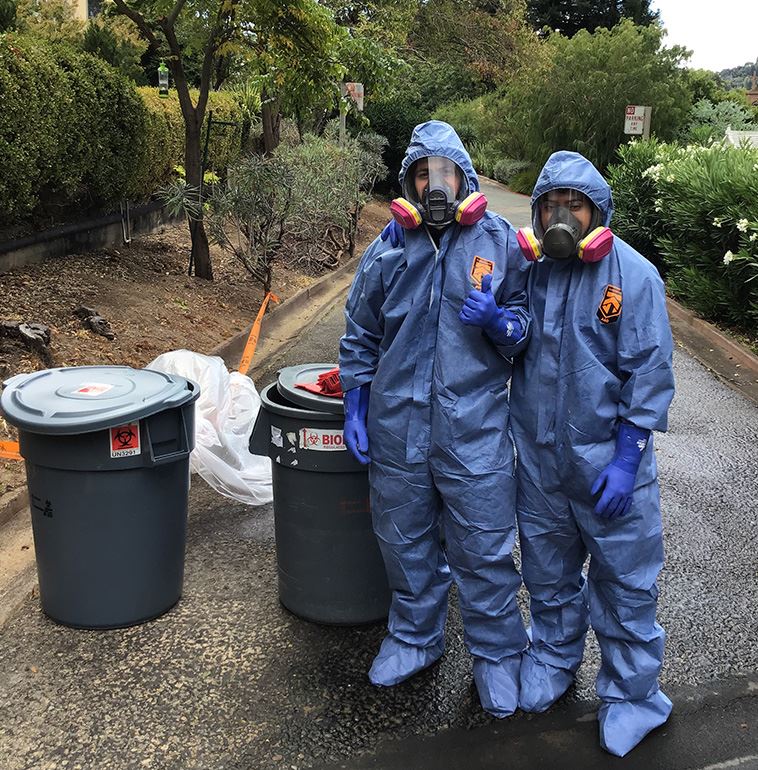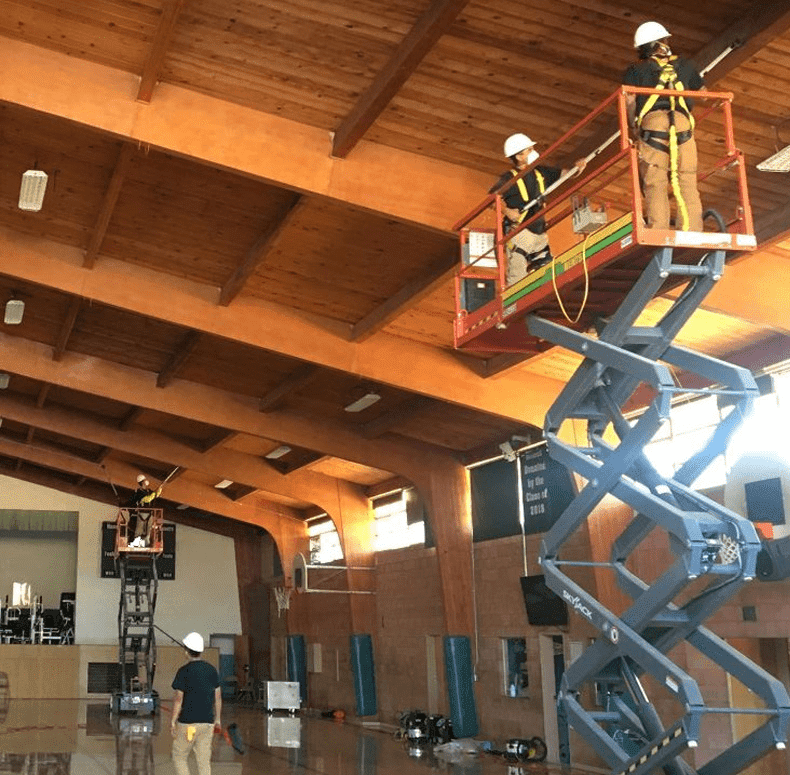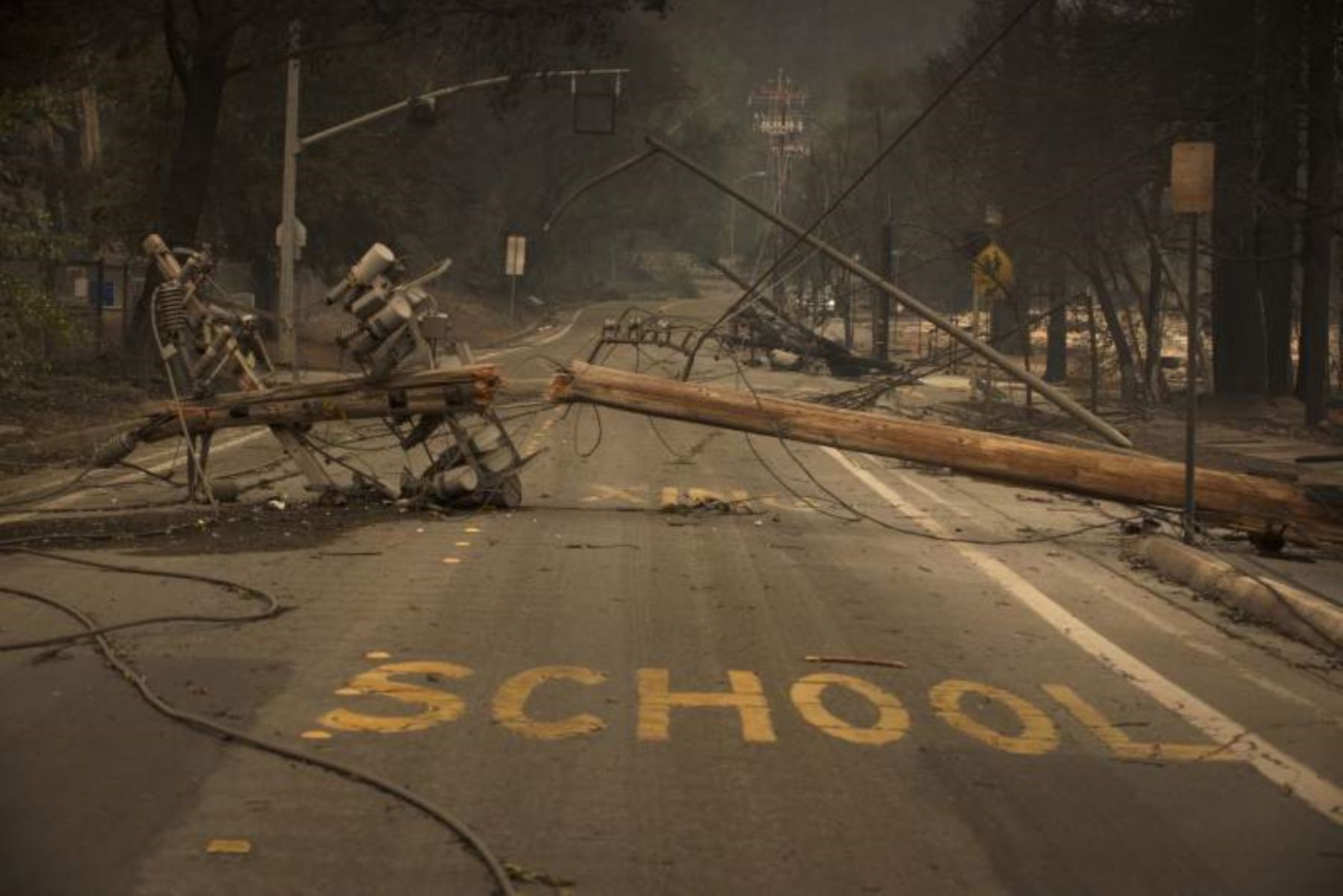
Biohazard Cleanup
Providing Biohazard Waste Disposal Services throughout California
A biohazard is any material or substance that can cause serious harm to your health. In many cases, biohazards are actually naturally occurring substances, but spills or unexpected containment failures can create a high risk for potential exposure. And exposure to a biohazard can mean exposure to diseases, bacteria, viruses, and plenty of other problems. This is why biohazards need to not only be cleaned thoroughly, but handled properly, and the team at West Coast Fire & Water can get the job done with confidence.
Has your property been exposed to a biohazard? Leave the mess to the team at West Coast Fire & Water! Contact us today!
Restore What's Most Important
The Local Biohazard Professionals
Biohazard remediation situations vary greatly, and West Coast Fire & Water is ready for them all. We understand most situations that call for our services can be emotionally difficult. We are here to make the process as stress-free and efficient as possible with superior customer service and a commitment to safety and thorough results. Whether you’re dealing with broken glass, fecal matter, blood, vandalism, or uninvited occupancy, West Coast Fire & Water has a team standing by 24/7.
We have the tools and preparation to handle a wide variety of biohazards, including:
- Blood cleanup
- Fecal or urine cleanup
- Raw sewage cleanup
- Hoarding cleanup
- Distressed property cleanup
- Virus or bacteria decontamination
- Property disinfecting
Biohazard cleanup refers to the process of safely and thoroughly removing, cleaning, and disinfecting materials or areas that have been contaminated with potentially harmful biological substances, such as blood, bodily fluids, pathogens, or other hazardous materials. It involves following specific protocols and using specialized equipment to minimize the risk of exposure and ensure the area is restored to a safe and sanitary condition.
Common types of biohazards that require remediation include:
- Blood and bodily fluids: These can carry various bloodborne pathogens such as HIV, hepatitis B and C, and other infectious diseases.
- Medical waste: Discarded needles, syringes, contaminated dressings, or other materials generated in healthcare settings.
- Pathogens: Bacteria, viruses, fungi, or other microorganisms that can cause infections or diseases.
- Animal or human remains: Decomposing bodies or carcasses that may pose health risks due to the presence of bacteria, viruses, or other pathogens.
Hoarding situations: Cleanup of environments where excessive clutter and filth may pose biohazardous conditions, including mold growth, pest infestations, or bacteria accumulation.
The biohazard cleanup process typically involves the following steps:
- Assessment: Evaluating the extent and nature of the biohazardous contamination to determine the appropriate cleanup approach.
- Containment: Establishing containment measures to prevent the spread of contaminants to unaffected areas. This may involve sealing off the contaminated area, using barriers, or implementing negative air pressure systems.
- Removal: Safely removing and disposing of biohazardous materials, including contaminated items, fluids, or debris.
- Cleaning and disinfection: Thoroughly cleaning and disinfecting surfaces, objects, and affected areas using appropriate cleaning agents and methods to eliminate or neutralize the biohazardous contaminants.
- Deodorization: Addressing any unpleasant odors that may be associated with the biohazardous materials.
- Proper disposal: Ensuring proper disposal of biohazardous waste in compliance with local regulations and guidelines.
Verification: Conducting post-cleanup testing or inspections to confirm that the area is free from biohazardous contaminants and has been restored to a safe condition.
Biohazards are dangerous because they can contain pathogens, microorganisms, or hazardous substances that pose a risk to human health. Exposure to biohazardous materials can lead to various infections, diseases, or allergic reactions. Some pathogens may be easily transmitted through direct contact with contaminated materials, inhalation of airborne particles, ingestion, or entry through open wounds. The severity of the danger depends on the specific biohazard involved and the level of exposure.
To prevent biological hazards in the workplace, consider the following measures:
- Implement proper hygiene practices: Encourage frequent handwashing with soap and water or the use of hand sanitizers. Provide access to handwashing facilities and promote respiratory hygiene, such as covering coughs and sneezes.
- Use personal protective equipment (PPE): Provide appropriate PPE, such as gloves, masks, goggles, or protective clothing, based on the specific hazards present. Train employees on the correct use, maintenance, and disposal of PPE.
- Implement engineering controls: Use ventilation systems, isolation barriers, or other engineering controls to minimize the risk of exposure to airborne contaminants or infectious agents.
- Develop and enforce safety protocols: Establish clear protocols for handling biohazardous materials, including proper storage, transportation, and disposal procedures. Ensure that employees receive training on these protocols and are aware of the risks associated with their work.
- Regular cleaning and disinfection: Maintain a clean and sanitary work environment by regularly cleaning and disinfecting surfaces, shared equipment, and commonly touched objects. Use appropriate disinfectants effective against the specific pathogens of concern.
Provide vaccinations: Consider providing vaccinations for employees against diseases such as hepatitis B, depending on the nature of the work and potential exposures.
The health risks associated with biohazards can vary depending on the type of biohazard and the level and duration of exposure. Some potential health risks include:
- Infections: Exposure to pathogens can lead to various infections, such as viral or bacterial diseases.
- Allergic reactions: Some individuals may develop allergic reactions when exposed to certain biohazardous substances, such as allergens from mold or dust mites.
- Respiratory problems: Inhalation of airborne biohazardous particles, such as mold spores or certain chemicals, can cause respiratory issues.
- Skin and mucous membrane irritation: Contact with biohazardous materials may lead to skin irritation, rashes, or irritation of the eyes, nose, or throat.
Occupational diseases: Prolonged exposure to certain biohazards, such as asbestos or certain chemicals, may increase the risk of occupational diseases, including cancer or respiratory conditions.
Legal requirements for biohazard remediation can vary depending on the jurisdiction and the specific circumstances. It is important to consult local regulations, guidelines, and authorities to ensure compliance. In general, legal requirements may include:
Occupational Safety and Health Administration (OSHA) regulations: OSHA has specific standards and guidelines for handling biohazardous materials and protecting workers from exposure. Compliance with OSHA’s Bloodborne Pathogens Standard is often necessary in healthcare and other relevant industries.
Environmental Protection Agency (EPA) regulations: EPA regulations may govern the proper handling, transportation, and disposal of biohazardous waste, including medical waste.
State and local regulations: States or local authorities may have additional regulations or licensing requirements for biohazard cleanup companies or individuals performing such work.
Reporting requirements: Some jurisdictions may require reporting incidents involving biohazardous materials or following specific notification protocols in the event of a cleanup.
It is crucial to consult legal professionals or relevant authorities to ensure full compliance with the applicable laws and regulations in your specific location.
Indoor air quality problem? Get help by contacting West Coast Fire & Water today!
California Flood & Fire Restoration
OUR SERVICES
We’re trained to handle even the toughest jobs, and we make it our mission to stay by your side and restore your home back to the way it should be as soon as possible.Storm Damage Repair
Storm Damage Repair
Water Damage Restoration
Mold & Mildew Remediation
Mold & Mildew Remediation
Air Purification
COVID-19 Decontamination
Biohazard Cleanup
Fire Damage Restoration
Fire Damage Restoration
Commercial Restoration Services
Commercial Restoration Services
Smoke Damage Restoration
Board-Ups
ROOF TARPING

Our Testimonials
Say It Best
Get a Free Quote
Simply complete our form below


